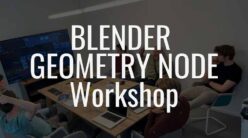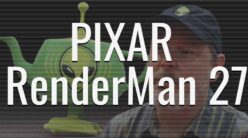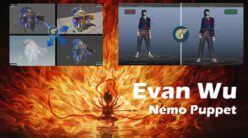Phần trình bày lượt dịch (song ngữ, hơi khó nhìn)
TP webinar – destruction effects, by Hristo Velev
- Who’s talking (Người Phát Ngôn là ai)
- Hristo Velev, Bottleship VFX founder and tech lead (Nhà sáng lập Bottleship VFX và là đứng đầu công nghệ)
- Recent Bottleship work in Hunter Killer, Airstrike
- Grew up at Pixomondo and Scanline during 2012, Superman, Iron Man, etc
- Overview
- I’ll talk about common FX, how we approach them, and break down the process in a destruction shot
- Why we can’t show ‘real’ production scenes, and why that might be better anyway
- VFX cliches and typical setups (Sự giống nhau như khuôn đúc của kỹ xảo điện ảnh và cách setup thông thường)
- All movies are different, but cliches are very frequent. Learn these and you’ll be well off (tất cả các bộ phim đều khác nhau, nhưng những hình mẫu sẽ có tương tự. Tìm hiểu sẽ thấy và dễ làm)
- Building destruction (xây dựng bộ destruction)
- Environment destruction, ground break (destruction yếu tố môi trường, nền đất)
- Ground impact (hiệu ứng tương tác lên mặt nền/đất)
- Meteoric (sa thạch rơi)
- Some more involving fluids like splashes, smoke stacks, explosions and ocean interactions – won’t deal with these for now (một vài yếu tố liên quan như nước nôi văn tung tóe, khói chồng chất, các vụ nổ và tương tác với biển – sẽ không nói về vụ này ở đây)
- Planning (Lên Kế Hoạch)
- Concept art and effect design (nói về sáng tạo mẫu nghệ thuật và thiết kế các hiệu ứng)
- Assets quality check (kiểm tra chất lượng của tài nguyên đầu vào)
- UVs, these need to ‘freeze’ as the asset goes into a sim (kiểm tra UV, cần phải “đóng băng” UV các tài nguyên đi vào giai đoạn simulation)
- Material ids (kiểm tra ID vật liệu)
- Is there enough geometry and detail sufficient for creating interest (xem có đủ khối hình và chi tiết ấn tượng không)
- Is there too much geometry somewhere that will slow things down (kiểm tra xem mô hình có quá phức tạp làm cho mọi thứ chậm đi ?)
- Plates, cameras and ranges (xem bối cảnh, góc camera và khoảng thời lượng cần làm)
- Animation and preroll (tạo animation, và tạo các đoạn simulation chuẩn bị cho hiệu ứng hình – sim trước, sim sẵn để lấy dữ liệu)
- Base simulation (Lớp Simulation nền/bước đầu)
- This is the most art direction intensive part of the process (đây là nơi chính để tạo tác mẫu nghệ thuật, rất căng và áp lực trong toàn qui trình)
- Fast setups win – more versions let the director direct (setup càng nhanh càng tốt, càng có nhiều phiên bản cho đạo diễn lựa và chỉ đạo)
- Have wildly different versions so choice between them can be meaningful (sự khác biệt giữa các phiên bản phải rõ ràng để thật sự đó là các phiên bản khác nhau)
- Structure and internal connectivity is key. Houses of cards don’t look too hot. Use joints or viscous fluids for guide simulations (cấu trúc và các kết nối bên trong là tối quan trọng. Đừng có xào nấu căng quá. Sử dụng các joint và chẩt lỏng kết dính làm tiêu chuẩn dẫn đường cho simulation)
- Secondaries (Tạo lớp simulation thứ 2 dựa trên base)
- Debris (mảng miếng vỡ nhỏ)
- There’s usually too much of these! Need to plan wise to fit them in memory (thông thường số lượng dạng này rất nhiều, cần phải có kế hoạch thông minh để tối ưu bộ nhớ)
- Splash and stream type emissions. Splashes happen on event, streams start and end on events (Nước văng lên và các dòng chảy kiểu emission. Nước tung lên là xảy ra theo event, dòng chảy là có phần đầu và phần cuối là event)
- Follow type emissions, to add edge details (tạo chi tiết vào cạnh, qua chức năng Follow kiểu Emission)
- Emitting from the right places and the right conditions (Emission đúng và đủ)
- Solvers – Bullet for bigger and fewer, SPH for more and smaller (Xử lý Solver – Bullet cho cảnh to và có 1 ít, SPH cho thêm và các cảnh nhỏ)
- Point clouds, Krakatoa and Frost for debris instancing (Sử dụng Point Cloud, Krakatoa và Frost để tạo instance cho Debris)
- Low memory footprint (tối ưu bộ nhớ)
- Lots of lighting control – on shapes, shaders, sizes, amounts (có thể dễ dàng điều khiển về kích thước, vật liệu, khối hình và khối lượng)
- Data mindful thinking – you’re creating information for the lighting artist – send them all they need (Luôn nhớ là sau đó bạn sẽ cần đưa toàn bộ dữ liệu cho các lighting artist, hãy cung cấp mọi thứ họ cần)
- Initial position (rest frame) for noise seeding (sử dụng vị trí khởi tạo – Rest frame để cho noise hoạt động)
- Velocity
- Age and lifespan for scaling
- Orientation
- Radius
- Volumetrics
- Caching emitters for artists who work in parallel. Usually particles and data on them are enough, they can do the rest – just give them the data (Caching emitters cho các artist cùng làm song song. Sử dụng hạt và các dữ liệu đi theo là vừa ổn, các artist có thể làm từ đó trở đi, cung cấp cho họ đầy đủ)
- Smart emission areas
- Age
- Velocity
- Lighting
- Base sim is sent as either TP cache or geo cache(XMesh/Alembic) to lighting
- TP cache has more control (Thinking Particles cache cho phép hiệu chỉnh nhiều)
- Geo cache is simpler to deal with for the lighting artist (Cache kiểu Geo sẽ dễ làm việc hơn cho lighting artist)
- It’s important to have material control – either in TP group material override, or in geo multimatte overrides (Điều khiển được material là rất cần thiết, bao gồm cả Thinking Particles group ghi đè material hoặc theo multimatte của geo)
- Secondaries are PRT/Frost
- Volumetrics are cache loaders that matte with the geometry
- Base sim is sent as either TP cache or geo cache(XMesh/Alembic) to lighting
- Caching emitters for artists who work in parallel. Usually particles and data on them are enough, they can do the rest – just give them the data (Caching emitters cho các artist cùng làm song song. Sử dụng hạt và các dữ liệu đi theo là vừa ổn, các artist có thể làm từ đó trở đi, cung cấp cho họ đầy đủ)
- Debris (mảng miếng vỡ nhỏ)







